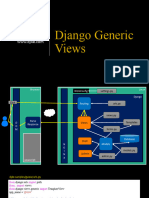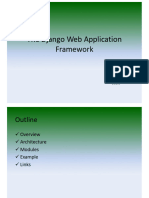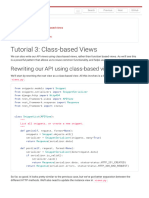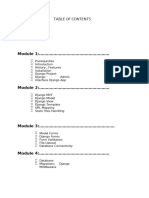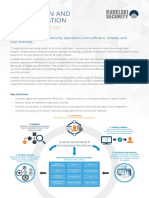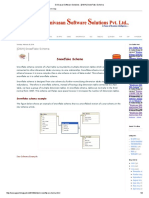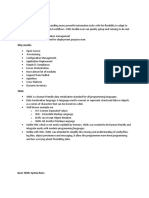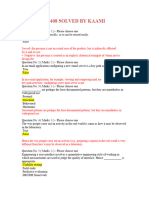0% found this document useful (0 votes)
37 views4 pagesTopic - Class Based Views
Class-based views (CBVs) are an alternative way to define views in Django using classes rather than functions. CBVs provide a more organized and reusable structure by separating view logic into individual methods that handle different HTTP methods. Some advantages of CBVs include reusability through inheritance, better organization of concerns, and built-in mixins for common patterns like authentication. Common CBVs provided by Django include View, TemplateView, ListView, DetailView, and FormView.
Uploaded by
Manpreet KaurCopyright
© © All Rights Reserved
We take content rights seriously. If you suspect this is your content, claim it here.
Available Formats
Download as PDF, TXT or read online on Scribd
0% found this document useful (0 votes)
37 views4 pagesTopic - Class Based Views
Class-based views (CBVs) are an alternative way to define views in Django using classes rather than functions. CBVs provide a more organized and reusable structure by separating view logic into individual methods that handle different HTTP methods. Some advantages of CBVs include reusability through inheritance, better organization of concerns, and built-in mixins for common patterns like authentication. Common CBVs provided by Django include View, TemplateView, ListView, DetailView, and FormView.
Uploaded by
Manpreet KaurCopyright
© © All Rights Reserved
We take content rights seriously. If you suspect this is your content, claim it here.
Available Formats
Download as PDF, TXT or read online on Scribd
/ 4







